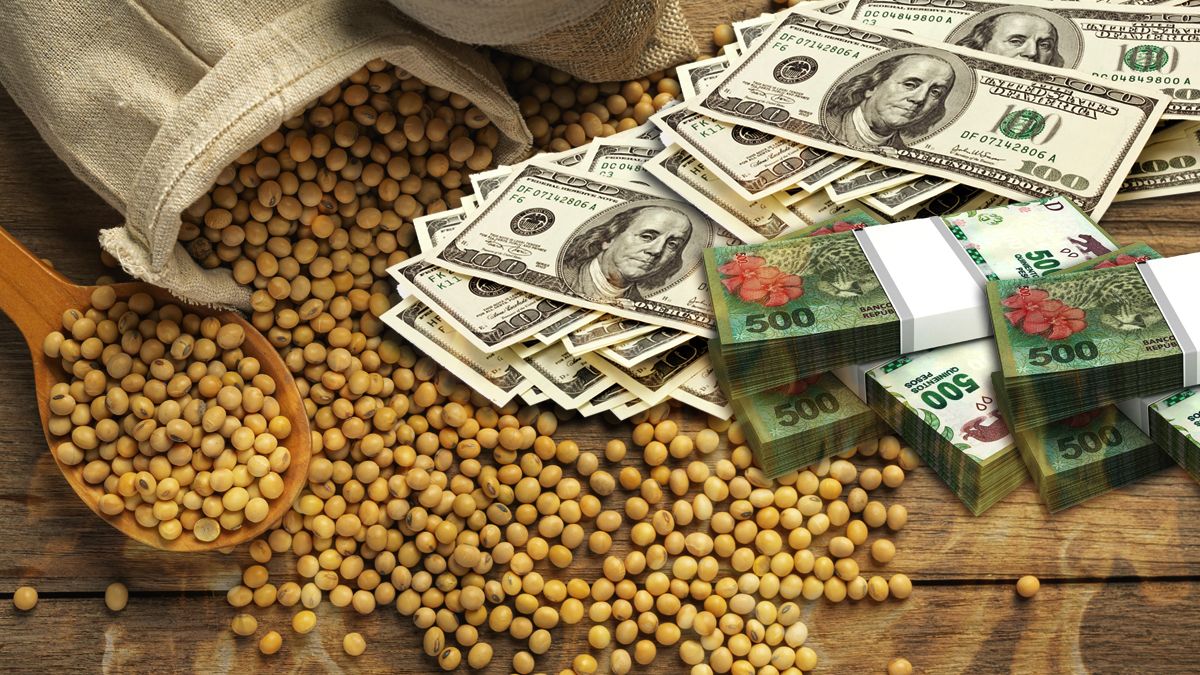According to estimates of Mediterranean Foundationin October the liquidation could be between US$1,250 million and US$1,650 million, it would recover slightly in November, moving to a range between US$1,350 and US$1,800 million, and it would improve again in December due to the entry into the market of winter crops (US$2,000-US$2,550 million).
Dollar: what’s next
“The volume of sales showed that the problem was not one of quantity, but of price, whose official exchange rate is very behind, removing incentives to liquidate. Those pesos “burn” so the producers sought coverage for it, either through the purchase of inputs or MEP”, said the economist Salvador Vitelli, in dialogue with Ambit. A demonstration of this was given by the financial dollars with strong rises in the last two weeks. The dollar counted with liquid or CCL closed on Friday at $312, after rising almost $9 in the week. Meanwhile, the MEP dollar increased almost $5 in five days to settle around $302.
“It is expected that these pesos will overheat the market (as is happening these days) of financial u$s (those who can access said dollars). That is why the government surprisingly announced on Monday that the companies that sell under this scheme would not be able to access the MEP. In addition, if the MEP u$s is analyzed in REAL terms (adjusted for inflation), it is concluded that it is at average values of 2022, making its real value not look so crazy and it can go up without too many difficulties” , he added.
Dolarmep2.jpg
Chart prepared by Salvador Vitelli for Ámbito Financiero
According to the economist, “The exchange differential was not free for the Central Bank, but rather had its costs, with an issue on 9/22/22 of 17.2% of the monetary base at the beginning of the month. The issue is explained in the purchases of the US$ soybeans at $200 subtracting the sales made in the MULC from the price of the official US$. At the close of 9/22/22, I calculate that the BCRA has issued around $735,000 million to maintain this scheme.”
“With this avalanche of pesos on the prowl, hopefully alt bucks get hot since pesos do not end up convincing Argentines as a savings method. Although the BCRA has increased the reference rate (LELIQ 75% TNA) it seems not enough to calm the fall in the demand for money.
More traps and other alternatives
In dialogue with this medium, the economist Ivan Carrino add your perspective. “How is the movie going? The government could extend the soybean dollar, or better yet, it should directly accept reality and go to a single free exchange rate, like any normal country in the world. If the economy is as good as they say it is is, they should not be afraid of the free floating of the dollar. The value of the dollar would be closer to the blue, and from then on it will depend on how much the government can generate confidence about the future.”
For Carrino, the good numbers left by the soybean dollar show “that nobody wants to sell to the official dollar” for which “they took advantage of this window of time to sell everything they could” at a more competitive exchange rate. From now on, what remains is remnant.
In this sense, he estimated that if the scheme was not continued, “The liquidation will be $1 billion at most, falling sharply” and if the scheme continues, they could obtain at least $2 billion by the end of the year. “Anything that they define must have a certain future horizon, otherwise it will remain as something that has to be prolonged every month, you cannot operate with such uncertainty”he asserted.
According to the latest report of Fernando Marull and Associates (FMyA), In a “normal” situation, the rise in the dollar after the program should be “temporary” if the issue “is for the purchase of reserves.” However, with a Central Bank without the possibility of intervening in the market and without incentives, the situation becomes more complex.
For Marull, without a soybean dollar The Central Bank has no choice but to tighten the trap on tourism. “If you want to continue with the Soybean Dollar and “not issue pesos, the BCRA will have to formalize an exchange split and that in the same segment of $200, they buy and sell, both Soybeans and Tourism, which demands almost US$700m per month. However, Soybean Dollar = Tourist Dollar, the BCRA avoids having to issue pesos,” the document concluded.
Vitelli, in this context, pointed out the alternatives that the Government could take that do not contemplate a devaluation.
- Extend the incentive not only to soybeans but also to other exportable products improving the balance of the trade balance that in August, for example, was in deficit by US$300M. “This would accommodate expectations regarding the exchange rate applicable to the export sector and not artificially remain at a fixed value for a single product (soybeans) generating disarbitration within the same market,” he added.
- Accelerate devaluation: The official dollar could increase at a rate of around 8% per month (inflation), thus reaching the end of the year with a TC of $182.
- Channel foreign tourism to settle currency for the official market and not for the blue, generating a deficit balance. “For this, it should logically be an exchange rate similar to the MEP.”
- raise the dollar card through an increase in the PAIS Tax: “this should go through Congress, so it is an alternative with a lower probability of occurrence, in my opinion”.
“As long as the exchange rate is not corrected, taking it to a more competitive plane, we will be back in the same problem again, better sooner than later,” concluded the analyst.
Source: Ambito
David William is a talented author who has made a name for himself in the world of writing. He is a professional author who writes on a wide range of topics, from general interest to opinion news. David is currently working as a writer at 24 hours worlds where he brings his unique perspective and in-depth research to his articles, making them both informative and engaging.




